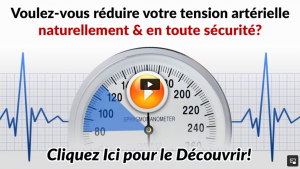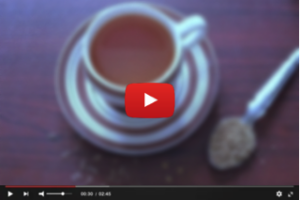The #1 Rated Blood Sugar Formula
Keto and High Blood Pressure: A Science-Based Guide

Is Keto good for high blood pressure? You won’t find many articles answering this question. Unless, of course, you’re reading scientific journals.
In the literature, there is much data on how low-carb diets affect blood pressure, among other metabolic parameters.
When an obese or overweight person loses weight on Keto, their blood pressure generally improves too.
This doesn’t mean that Keto can improve all instances of high blood pressure. But in some cases, it may be part of the solution.
Before we talk more about Keto and high blood pressure, let’s cover some basics.
Blood Pressure Basics
Most people understand what blood pressure refers to. It’s the pressure of your blood against your blood vessel walls.
This pressure is influenced by the pumping action of your heart, the volume of your blood, electrolyte levels, your nervous system, and other factors. A brain structure called the hypothalamus serves an important rolein orchestrating this system.
When you measure your blood pressure, you get two numbers:
- Systolic blood pressure: blood pressure when your heart beats (this is the top number).
- Diastolic blood pressure: blood pressure between heartbeats (this is the bottom number).
Taken together—as in, 120/80—these two numbers indicate a person’s blood pressure status. Here’s how blood pressure status is classified by the American Heart Association:
- Normal blood pressure: systolic less than 120 AND diastolic less than 80
- Elevated blood pressure: systolic 120-129 AND diastolic less than 80
- High blood pressure: systolic 130 or higher OR diastolic 80 or higher
So while healthy blood pressure means looking good on both measures, high blood pressure only requires elevations on one.
What Causes High Blood Pressure?
Suffered by one-third of Americans, high blood pressure (also called hypertension) is a well-documented risk factor for both heart attack and stroke. Hypertension also damages the delicate micro vessels of the brain, increasing the risk of dementia.
What causes high blood pressure? That’s where things get tricky. In most cases, researchers aren’t sure.
That’s why most cases of high blood pressure are called “primary hypertension” or “essential hypertension.” There’s no identifiable cause.
But even if the mechanisms aren’t entirely clear, hypertension risk factors still exist. And probably the most significant is obesity.
When someone is obese, they tend to have higher levels of chronic inflammation (chronic inflammation refers to unnecessary, damaging immune activity). This immune activity, in turn, creates hormonal disturbances that may elevate blood pressure.
Along with obesity, other risk factors for hypertension include:
- Smoking cigarettes
- Alcoholism
- A sedentary lifestyle
- Genetic factors
- Short sleep
- Electrolyte imbalances (too little potassium or too much sodium)
- A diet high in refined carbohydrates.
How Might Keto Help With High Blood Pressure?
When an obese person loses weight, other metabolic markers tend to improve too. That includes inflammation, cholesterol levels, triglycerides, blood glucose, insulin function, and—relevant here—blood pressure.
Keto can be an effective weight loss diet, especially in obese people and people with diabetes. The literature is robust on this point.
The mechanisms by which Keto may promote fat loss include:
- Appetite suppression (people tend to eat less on Keto)
- Increased energy burn
- Increased fat burning due to low insulin levels
In a nutshell, that’s how Keto has the potential to help with high blood pressure: By fighting the hypertension risk factors of obesity and diabetes.
A diet high in processed carbohydrates and refined sugars leads to arterial inflammation over time, which can cause an elevation in your blood pressure. It stands to reason that a diet low in carbs and sugars will therefore decrease insulin levels and arterial inflammation.
Studies On Keto for High Blood Pressure
Many studies suggest Keto may help with treating or preventing hypertension. Here’s a small sampling:
Study #1: Keto vs. 3 Other Diets
Overweight premenopausal women had greater reductions in systolic and diastolic blood on an Atkins diet (similar rules to Keto—under 20 grams carbs for two months, then under 50 grams for 10 months) than on the Zone diet (30% carbs), LEARN diet (60% carbs), or Ornish diet (under 10% fat calories).On Keto, average systolic blood pressure fell twice as much as on any other diet.
Study #2: Keto vs Low-fat Diet Plus Meds
Overweight and obese people (30% had hypertension) were split into two groups: low-carb and low-fat plus Orlistat. (Orlistat is a drug prescribed for weight loss and high blood pressure). Results? Blood pressure fell in the Keto group but rose in the low-fat plus Orlistat group. This result lines up with observational research linking low-fat diets to metabolic syndrome.
Study #3: Mediterranean Keto.
Forty obese people were put on a Spanish Mediterranean Keto diet (under 30 grams carbs, olive oil and red wine daily, and vegetables encouraged) for 12 weeks. By the end of the study, the average systolic blood pressure fell from 126 to 109 and the average diastolic from 85 to 75. In other words, the average blood pressure went from “elevated” to “normal.”
Possible Risks of Keto for Blood Pressure
In general, the data suggests that Keto may help lower blood pressure. But there are a few cases where it might not.
For instance, a dirty Keto diet would be short on potassium (from vegetables) to counter the high sodium load from salty processed meat. And too much sodium without enough potassium will raise blood pressure.
Too little sodium can also raise blood pressure. (Low sodium is common on Keto because low-carb diets increase urinary sodium loss.) When you don’t consume enough sodium, your body releases a sodium-retaining, blood-pressure-raising hormone called a dirty Keto diet would be short on potassium (from vegetables) to counter the high sodium load from salty processed meat. And too much sodium without enough potassium will raise blood pressure.
As always, work with a medical professional to monitor and manage your blood pressure.
6 Tips to Improve Blood Pressure
Want to keep your blood pressure within healthy ranges? Mind these diet and lifestyle tips:
- Exercise. Regular mild to moderate aerobic exercise is well-documented to lower blood pressure in people with hypertension. The CDC and the American Heart Association both recommend 150 minutes of moderate intensity physical activity per week.
- Sleep well. Short sleep, insomnia, and other sleep disorders are independent risk factors for high blood pressure.
- Maintain a healthy weight. When obese people lose weight, they typically see improvements in blood pressure.
- Get enough sodium and potassium. Deficiencies in either can elevate blood pressure. In particular, higher potassium intakes are not controversially linked to lower hypertension risk. Leafy greens, meats, nuts, and tuna are all rich in potassium.
- Get more fiber. Higher fiber intakes seem to be protective against heart disease, and certain fibers have been shown to lower arterial blood pressure.
- Try a low-carb diet. Just be sure it’s a clean Keto diet with plenty of low-carb vegetables.
Track all these metrics—from sleep to exercise to carb count—in the Carb Manager app. Having everything recorded in one place can be an invaluable tool in your health and wellness journey.











